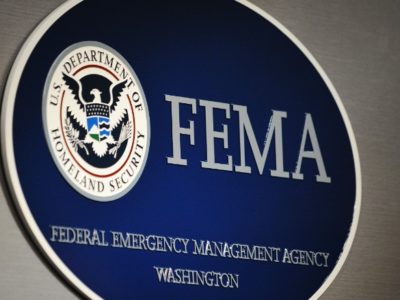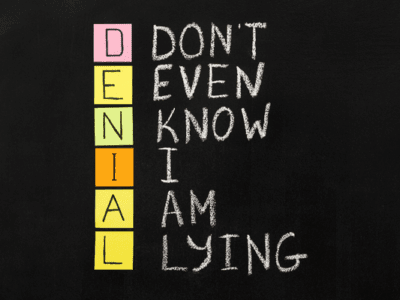Aging Dams, Forgotten Perils
You’ve heard it before but it’s still true: U.S. infrastructure is a mess.
Stop me if you’ve heard this one before: Critical U.S. infrastructure is dilapidated and unsafe. Regulation is week, and enforcement is weaker. Everyone agrees on the need for action, and climate change will only make the problem worse. but no one seems to do anything about it. Sadly, this has become a familiar story.
Take dams for instance. A year ago I noted that the federal government regulates the safety of only a small proportion of dams in the United States, while it owns less than 5%. According to the American Society of Civil Engineers, in 2015, there were more than 15,000 dams classified as “high-hazard potential,” a number that had increased by a third since 2005. The federal government issues dam safety guidelines, but they are not mandatory. The national flood safety program is established by 33 U.S. Code § 467f and includes provisions for training and other support of state programs. According to FEMA, nine states (Alabama, California, Florida, Georgia, Indiana, Iowa, Kentucky, Vermont, and Wyoming) lack the power to require owners of high-hazard dams to prepare emergency action plans covering evacuation and other responses. “Clearly,” I said, “more needs to be done to ensure the safety of our country’s dams,” which was only stating the obvious.
You may be shocked to learn that the situation seems to be unchanged a year later. Last month, Yale360 ran a story entitled “In an Era of Extreme Weather, Concerns Grow Over Dam Safety.” The American Society of Civil Engineers now estimates that “the cost of rehabilitating dams whose failure would threaten human life at nearly $45 billion, and the cost of fixing all dams in need of repair at more than $64 billion.” Many of the people at risk are unaware of this fact, because the federal government stopped making risk information about individual dams available after 9/11. The government has a National Dam Safety program that does provide funding for state programs and financing for dam safety improvements.
During the 2016 election, I naively thought that the one sure outcome of the election would be a major infrastructure initiative, because both Hillary Clinton and Donald Trump advocated it. It turned out, however, that the Democrats wanted a public sector effort while Congressional Republicans (and maybe Trump) wanted a largely private effort funded by user fees. White House “Infrastructure Weeks” became something of a running joke. It’s certainly possible that major new infrastructure funding will become available at some point, if not in this Administration then down the line. But the country’s needs are so large that we should not count on future federal to address the full problem.
Eight thousand dams are listed as “major” under U.S. Geological Survey guidelines. These dams are the most likely to get attention. Given the need to prioritize the use of government resources, these dams should also be prime targets for government inspection and safety regulation. Hopefully we’ll start seeing some major funding for dam repair at some point, at least for these major dams. But more than 90% of dams are not considered major. What’s to be done about them?
In environmental law, we have learned that it is much easier to regulate smaller numbers of large sources than large numbers of small sources. For instance, power plants and refineries can be regulated much more easily than emissions from the millions of cars already on the road. Certainly states should be encouraged to inspect these dams, and the federal government should try to do more. Under Obama, EPA had worked on strategies for “smart enforcement.” As it turns out, the Trump Administration wasn’t interested in any kind of enforcement, smart or not. Nevertheless, those techniques might make enforcement resources stretch further. Still, safety regulation isn’t likely to offer a complete solution.
Here are some some other possible approaches drawn by analogy from various parts of environmental law:
- We could emulate the Superfund program. Owners of existing dams on a national priority list would be strictly liable for the costs of dam improvement, with the government having the option of conducting the clean-up and then suing the owner for the costs. New owners could avoid liability only by due diligence to discover problems and have them corrected.
- As we do with some forms of waste, we could require the owner to maintain insurance or create a dedicated fund to be used for later remedial measures.
- Another model would be oil pollution liability, which would make dam owners liable without regard to fault for damages up to a certain level based on the size of the dam, with high liability for negligent owners.
- We could emulate the Toxic Substance Release Inventory by going back to federal disclosure of the inundation areas for all at-risk dams. This does the raise the potential of use of the information by terrorists, but is impeding public access to information is really the best strategy to deal with the problem? Any risk of abuse by terrorists has to be weighed against the safety benefits of releasing the information.
I’m sure there is no shortage of smart engineers and government folks thinking about these problems. The biggest problem is getting somebody with authority to pay attention.
Reader Comments
2 Replies to “Aging Dams, Forgotten Perils”
Comments are closed.







The SPCC program (and particularly its FRP sub-program) under the Clean Water Act might also be a potential model for regulating small dams. Establish size/volume thresholds, require a risk assessment and an engineering plan, etc. Doesn’t provide for funding necessarily, but understanding and planning for risks is an important step.
Everett – That’s an intriguing idea. Could you say more about how that would work?